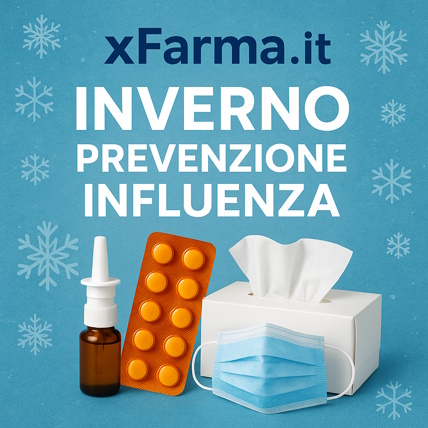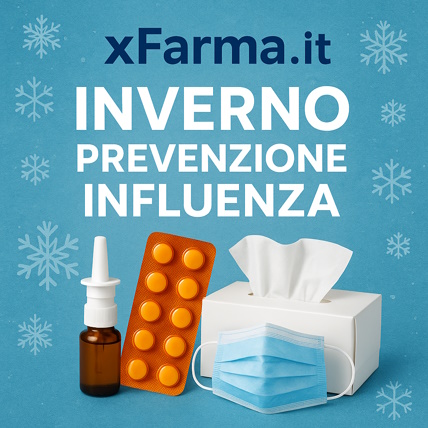Ship in Europe, Find out rates!
Nurofen Fever And Pain Children 200mg/5ml Oral Suspension Orange Flavor

- box Delivery in Italy in 24/48 and free returns
- star3.000+ positive reviews
- dropboxOver 60,000 products in the catalog
Oral suspension
Orange flavor
Oral suspension based on ibuprofen.
Therapeutic indications
Nurofen Fever and Pain is used in the symptomatic treatment of fever and mild to moderate pain.
Dosage and Posology
The daily dose is structured according to the weight and age of the patient. Undesirable effects can be minimized by using the lowest effective dose for the shortest possible duration of treatment needed to control symptoms (see section 4.4). In children between 3 and 6 months of age, limit administration to those weighing more than 5.6 kg.
Oral administration to infants and children between 3 months and 12 years of age should be done using a measuring syringe or measuring spoon provided with the product. Patients suffering from stomach problems can take the medicine with meals. The daily dose of 20-30 mg / kg body weight, divided 3 times a day at intervals of 6-8 hours, can be administered according to the following scheme. (Do not exceed the recommended dose).
The graduated scale on the body of the syringe highlights the notches for the different dosages; in particular the 2.5 ml notch corresponding to 50 mg of ibuprofen and the 5 ml notch corresponding to 100 mg of ibuprofen. The measuring spoon has two notches for two different dosages: the 2.5 ml notch corresponding to 50 mg of ibuprofen and the 5 ml notch corresponding to 100 mg of ibuprofen.
- 5.6 -7 Kg, 3 - 6 months: 2.5 ml
- 7 -10 kg, 6 - 12 months: 2.5 ml
- 10 - 15 Kg, 1 - 3 years: 5 ml
- 15 - 20 kg, 4 - 6 years: 7.5 ml (5 ml + 2.5 ml)
- 20 - 28 Kg, 7 - 9 years: 10 ml
- 28 - 43 Kg, 10 - 12 years: 15 ml
Number of administrations per day: 3 in 24 hours.
- Unscrew the cap by pushing it down and turning it to the left.
- Fully insert the tip of the syringe into the hole in the undercap.
- Shake well.
- Turn the bottle upside down, then, holding the syringe firmly, gently pull the plunger downward, allowing the suspension to flow into the syringe to the mark corresponding to the desired dose.
- Put the bottle back upright and remove the syringe by twisting it gently.
- Introduce the tip of the syringe into the child's mouth, and exert a slight pressure on the plunger to drain the suspension.
- After use, screw the cap to close the bottle and wash the syringe with warm water. Let it dry, keeping it out of the reach and sight of children.
Overdose
Signs and symptoms of toxicity were generally not observed at doses below 100 mg / kg in children or adults. However, supportive treatment may be required in some cases. Children have been observed to exhibit signs and symptoms of toxicity after ingestion of ibuprofen at doses of 400 mg / kg or greater. The half-life of the drug in case of overdose is 1.5-3 hours.
Most patients who accidentally ingest clinically relevant amounts of ibuprofen will experience symptoms within 4-6 hours. The most commonly reported symptoms of overdose include: nausea, vomiting, abdominal pain, lethargy and somnolence. Effects on the central nervous system (CNS) include headache, tinnitus, dizziness, seizures, and loss of consciousness. Nystagmus, metabolic acidosis, hypothermia, renal effects, gastrointestinal bleeding, coma, apnea, diarrhea, and CNS and respiratory depression have also been reported rarely. Disorientation, arousal state, fainting and cardiovascular toxicity including hypotension, bradycardia and tachycardia have been reported. In cases of significant overdose, renal failure and liver damage are possible. In more serious cases, prolongation of the prothrombin time (INR) may occur, probably caused by interference with the action of the coagulation factors present in the circulation. An exacerbation of the symptoms of the disease may occur in asthmatics.
There is no specific antidote to ibuprofen overdose. In the event of an overdose, symptomatic and supportive treatment is therefore indicated and should include maintenance of a patent airway and monitoring of cardiac function and vital signs until the patient is stabilized. Particular attention is paid to the control of blood pressure, acid-base balance and any gastrointestinal bleeding. Administration of activated charcoal should be considered within one hour of ingesting a potentially toxic amount. consideration of gastric lavage.;. Adequate diuresis must be ensured and renal and hepatic functions closely monitored. The patient should remain under observation for at least four hours following ingestion of a potentially toxic amount of drug. Any occurrence of frequent or prolonged seizures should be treated with intravenous diazepam or lorazepam. If ibuprofen has already been absorbed, alkaline substances should be administered to promote the excretion of the acidic ibuprofen in the urine. Administer bronchodilators in case of asthma. Depending on the clinical condition of the patient, other supportive measures may be necessary. For more information, contact your local poison control center.
Contraindications
- Hypersensitivity to ibuprofen or to any of the excipients
- Children under 3 months of age or weighing less than 5.6 kg.
- The medicinal product is contraindicated in patients who show or have previously shown hypersensitivity (e.g. asthma, rhinitis, angioedema, or urticaria) to acetylsalicylic acid or other analgesics, antipyretics, non-steroidal anti-inflammatory drugs (NSAIDs), particularly when hypersensitivity it is associated with nasal polyposis and asthma
- Active peptic ulcer.
- Severe renal or hepatic insufficiency
- Severe heart failure
- History of gastrointestinal haemorrhage or perforation related to previous NSAID therapy history of recurrent peptic haemorrhage / ulcer (two or more distinct episodes of proven ulceration or bleeding)
- Concomitant use of NSAIDs, including specific COX-2 inhibitors.
- During the last trimester of pregnancy
Side effects
The list of the following undesirable effects includes all those that have been recognized during treatment with ibuprofen for short treatment periods and for daily doses up to a maximum of 1200 mg. In the case of high-dose treatments for chronic or prolonged diseases, other undesirable effects may occur. Adverse reactions associated with ibuprofen administration are listed below by system organ class and frequency. Frequencies are defined as: Very common (1/10) Common (1/100, <1/10) Uncommon (1/1000, <1/100) Rare (1 / 10,000, <1/1000) Very rare ( <1 / 10,000), not known (frequency cannot be estimated from the available data). Within each frequency class, undesirable effects are presented in descending order of severity.
- Infections and infestations
- Rare: Cystitis, rhinitis
- Disorders of the blood and lymphatic system
- Very rare: Haematopoiesis disorders
- Disorders of the immune system
- Uncommon: Hypersensitivity reactions manifesting as urticaria and pruritus
- Very rare: severe hypersensitivity reactions including swelling of the face, tongue and larynx, dyspnoea, tachycardia, hypotension (anaphylaxis, angioedema or severe shock)
- Metabolism and nutrition disorders
- Not known: Fluid retention and decreased appetite
- Psychiatric disorders
- Not known: Irritability
- Rare Depression, insomnia, difficulty concentrating, emotional lability, visual and auditory disturbances
- Nervous system disorders
- Uncommon: Headache, dizziness, somnolence, convulsions.
- Very rare: Aseptic meningitis
- Rare: Cerebrovascular haemorrhage
- Eye disorders
- Rare: Dry eye
- Ear and labyrinth disorders
- Not known: Tinnitus
- Cardiac pathologies
- Not known: Heart failure and edema
- Rare: Palpitations
- Vascular pathologies
Not known: Hypertension and shock
- Respiratory, thoracic and mediastinal disorders
- Not known: Respiratory tract reactivity including asthma, obstruction of the larynx, bronchospasm or apnea, dyspnoea.
- Gastrointestinal disorders
- Uncommon: Abdominal pain, nausea and dyspepsia
- Rare: Diarrhea, flatulence, dry mouth, constipation and vomiting
- Very rare: Peptic ulcer, gastrointestinal perforation or bleeding, melaena and haematemesis, Mouth ulcerations and gastritis
- Not known Exacerbation of colitis and Crohn's disease8, pancreatitis, duodenitis, oesophagitis.
- Hepatobiliary disorders
- Very rare: Hepatic dysfunction, hepatitis, jaundice, hepatorenal syndrome, hepatic necrosis, hepatic failure
- Skin and subcutaneous tissue disorders
- Uncommon: Various skin rashes
- Very rare: Bullous reactions including Stevens-Johnson syndrome, erythema multiforme and toxic epidermal necrolysis
- Rare: Exfoliative dermatitis, alopcia, photosensitivity dermatitis
- Renal and urinary disorders
- Rare: Tubular necrosis, glomerulus nephritis, polyuria, haematuria
- Very rare: Acute renal failure
- Diagnostic tests
- Rare: Decreased hematocrit levels
- Very rare: Decrease in hemoglobin levels
Pregnancy and breastfeeding
The medicine is contraindicated in case of confirmed and presumed pregnancy, and during breastfeeding.
Inhibition of prostaglandin synthesis can adversely affect pregnancy and / or embryo / fetal development. Results of epidemiological studies suggest an increased risk of miscarriage and cardiac malformation and gastroschisis after use of a prostaglandin synthesis inhibitor in early pregnancy. The absolute risk of cardiac malformations increased from less than 1% to approximately 1.5%. The risk was considered to increase with dose and duration of therapy. In animals, administration of prostaglandin synthesis inhibitors has been shown to cause increased pre- and post-implantation loss and embryo-fetal mortality. Furthermore, an increased incidence of various malformations, including cardiovascular, has been reported in animals given prostaglandin synthesis inhibitors during the organogenetic period. During the first and second trimester of pregnancy, Nurofen Fever and Pain should not be administered unless strictly necessary. If Nurofen Fever and Pain is used by a woman attempting to conceive, or during the first and second trimester of pregnancy, the dose and duration of treatment should be kept as low as possible. During the third trimester of pregnancy, all prostaglandin synthesis inhibitors can expose
- the fetus to:
- cardiopulmonary toxicity (with premature closure of the arterial duct and pulmonary hypertension);
- renal dysfunction, which can progress to renal failure with oligo-hydroamnios;
- the mother and the newborn, at the end of pregnancy, to:
- possible prolongation of bleeding time, and antiplatelet effect which may occur even at very low doses;
- inhibition of uterine contractions resulting in delayed or prolonged labor.
Special warnings
Undesirable effects can be minimized by using the lowest effective dose for the shortest possible duration of treatment needed to control symptoms (see below on gastrointestinal and cardiovascular risks). The use of Nurofen Fever and Pain should be avoided in conjunction with NSAIDs, including selective COX-2 inhibitors. Analgesics, antipyretics, non-steroidal anti-inflammatory drugs can cause hypersensitivity reactions, potentially serious (anaphylactoid reactions), even in subjects not previously exposed to this type of drug. The risk of hypersensitivity reactions after taking ibuprofen is greater in subjects who have experienced such reactions after the use of other analgesics, antipyretics, non-steroidal anti-inflammatory drugs and in subjects with bronchial hyperreactivity (asthma), nasal polyposis or previous episodes of angioedema.
Gastrointestinal bleeding, ulceration and perforation: Gastrointestinal bleeding, ulceration and perforation, which can be fatal, have been reported during treatment with all NSAIDs, at any time, with or without warning symptoms or a previous history of serious gastrointestinal events. There is a risk of impaired renal function in dehydrated children and adolescents.
Elderly: Elderly patients have an increased frequency of adverse reactions to NSAIDs, especially gastrointestinal bleeding and perforation, which can be fatal. In the elderly and in patients with a history of ulcer, particularly if complicated with haemorrhage or perforation (see section 4.3), the risk of gastrointestinal bleeding, ulceration or perforation is higher with increasing doses of NSAIDs. These patients should start treatment with the lowest available dose. Concomitant use of protective agents (e.g. misoprostol or proton pump inhibitors) should be considered for these patients and also for patients taking low dose aspirin or other drugs that may increase the risk of gastrointestinal events.
Patients with a history of gastrointestinal toxicity, particularly the elderly, should report any unusual gastrointestinal symptoms (especially gastrointestinal bleeding) particularly in the initial stages of treatment. Caution should be exercised in patients taking concomitant medications that could increase the risk of ulceration or bleeding, such as oral corticosteroids, anticoagulants such as warfarin, selective serotonin reuptake inhibitors or antiplatelet agents such as acetylsalicylic acid (aspirin). When gastrointestinal bleeding or ulceration occurs in patients taking Nurofen Fever and Pain, the treatment should be discontinued. NSAIDs should be administered with caution to patients with a history of gastrointestinal disease (ulcerative colitis, Crohn's disease) as these conditions can be exacerbated.
Serious skin reactions, some of them fatal, including exfoliative dermatitis, Stevens-Johnson syndrome and toxic epidermal necrolysis, have been reported very rarely in association with the use of NSAIDs. In the early stages of therapy, patients appear to be at higher risk: the onset of the reaction occurs in most cases within the first month of treatment. Nurofen Fever and Pain should be discontinued at the first appearance of skin rash, mucosal lesions or any other signs of hypersensitivity. Caution is required (discuss with your doctor or pharmacist) before starting treatment in patients with a history of hypertension and / or heart failure as fluid retention, hypertension and edema have been reported in association with treatment with NSAIDs. Clinical studies and epidemiological data suggest that the use of ibuprofen, especially at high doses (2400 mg / day) and for long-term treatment, may be associated with a modest increased risk of arterial thrombotic events (e.g. myocardial infarction or stroke). In general, epidemiological studies do not suggest that low doses of ibuprofen (e.g. ≤ 1200 mg / day) are associated with an increased risk of myocardial infarction. Patients with uncontrolled hypertension, congestive heart failure, established ischemic heart disease, peripheral arterial disease and / or cerebrovascular disease should only be treated with ibuprofen after careful consideration. Similar considerations should be made before initiating long-term treatment in patients with risk factors for cardiovascular events (e.g. hypertension, hyperlipidemia, diabetes mellitus, smoking).
The use of ibuprofen, acetylsalicylic acid or other analgesics, antipyretics, non-steroidal anti-inflammatory drugs, requires particular caution: • in case of asthma or current or previous allergic diseases: possible deterioration of bronchoconstriction; • in the presence of coagulation defects: reduction of coagulability; • in the presence of kidney, heart or hypertension diseases: possible critical reduction in renal function (especially in subjects with impaired renal or hepatic function, heart failure or being treated with diuretics), nephrotoxicity or fluid retention; • in the presence of liver disease: possible hepatotoxicity. • rehydrate the subject before starting and during treatment in case of dehydration (for example due to fever, vomiting or diarrhea).
The following precautions are of relevance during prolonged treatments: • Watch for signs or symptoms of gastrointestinal ulceration or bleeding; • monitor for signs or symptoms of hepatotoxicity; • monitor for signs or symptoms of nephrotoxicity; • if visual disturbances arise (blurred or reduced vision, scotomas, altered color perception): stop the treatment and consult an ophthalmologist; • if signs or symptoms of meningitis develop: evaluate the rare possibility that this is due to the use of ibuprofen (aseptic meningitis; more common in subjects with systemic lupus erythematosus and mixed connective tissue disease or other collagen diseases) (see section 4.8) . Since Nurofen Fever and Pain contains maltitol, patients with rare hereditary problems of fructose intolerance should not take this medicine. Nurofen Fever and Pain does not contain sugar and is therefore indicated for those patients who need to control the intake of sugars and calories. Each 2.5 ml dose of suspension contains 4.63 mg (0.20 mmol) of sodium; this should be taken into account in cases where a low sodium diet is recommended.
Expiry and retention
Check the expiration date indicated on the package. The expiry date indicated on the package refers to the product in intact packaging, correctly stored.
Warning : do not use the medicine after the expiry date indicated on the package.
Composition
1 ml of Nurofen Fever and Pain contains:
Active principle
Ibuprofen 20 mg
Excipients
Polysorbate 80, glycerin, maltitol syrup, sodium saccharin, citric acid, sodium citrate, xanthan gum, sodium chloride, orange flavor, domifene bromide, purified water.
| Destination | Cost | Detail |
|---|---|---|
| Italy | €5,90* | 24/72H |
| Austria, France, Germany, Slovenia | € 13* | 3 days |
| Belgium, Luxembourg, Portugal, Netherlands, Spain | € 14* | 4 days |
| Bulgary, Cechia, Hungary, Poland, Romania, Slovakia | € 19* | 5 days |
| Denmark, Estonia, Finland, Ireland, Lithuania, Latvia ,Sweden | € 22* | 5 days |
| United Kingdom, Switzerland, Greece, Malta/td> | € 30* | 7 days |
| Canada | € 40 | 7 Days |
European shipments with express courier: FedEx, MBE, DHL
*For the shipment outside band B ther's an extra cost of 22€ *For the shipment outside band C ther's an extra cost of 30€ Delivery Times exclude Saturday and Holidays
For Islands and Areas of difficult Accessibility the shipments are made in 72 hours and the cost will be increased by 15€


